Problem
Project
My Role
Feminine care brands are not required by the FDA to release all ingredients in their products, hiding dangerous ingredients from the public that can cause serious health injuries and risks in their users.
We felt the best way to educate and inform our target audience was through social media pages, creating posts aiming at telling real stories and showing safe brands.
My teammates and I reached our end goal through extensive research, strategizing, interviewing, and organizing.
Framing the problem as a design question- version 1
How might we improve awareness of women on their daily use of common feminine products that can be harmful to their bodies?
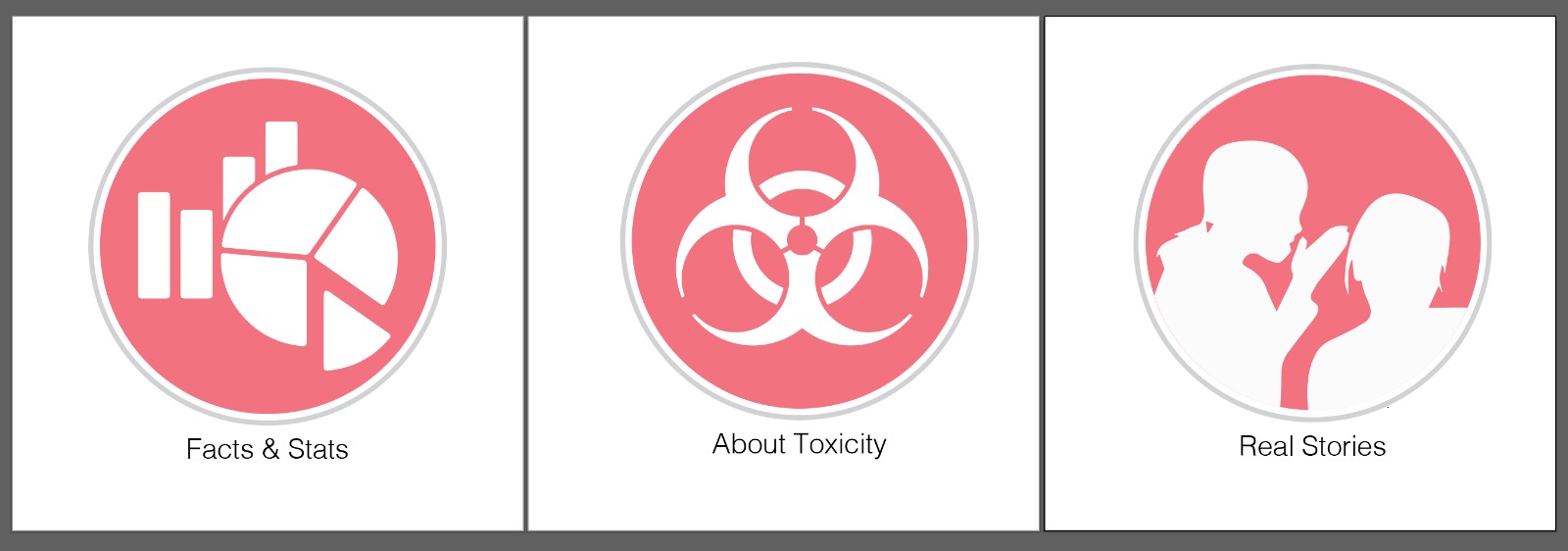
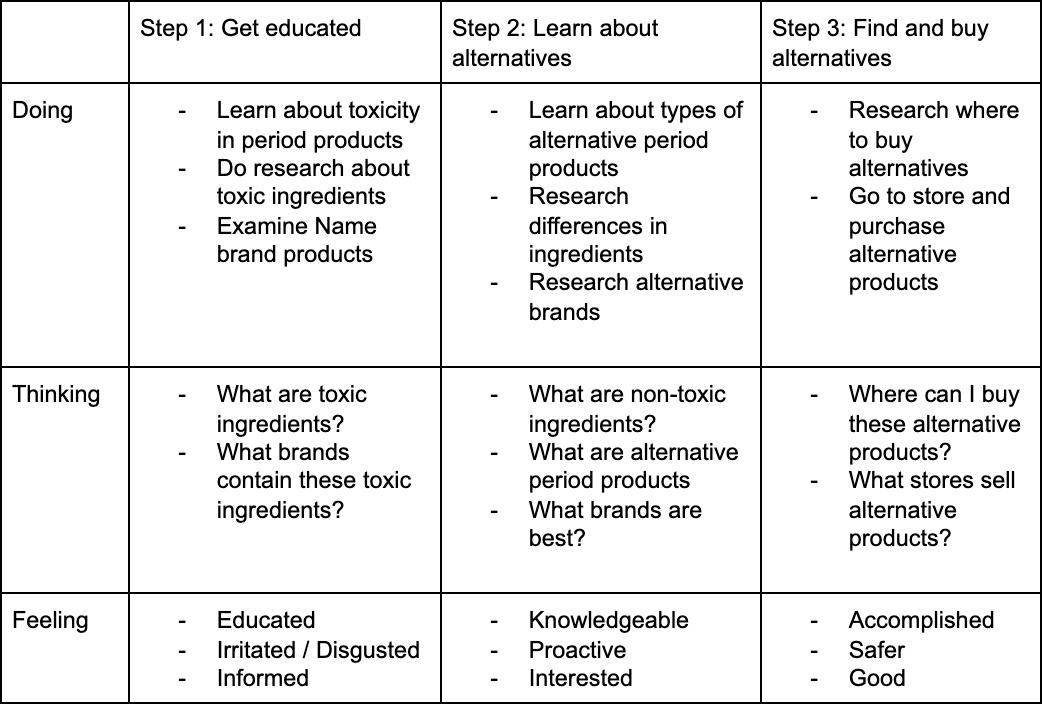
Possible solutions to our problem (out of reach for our level of work)
1. Better regulation by the FDA, communicating with the companies that make these products, getting the word out to women in our community about this issue, providing women with healthier alternatives.
2. List "Chemicals of Concern" linking them to common products
3. Unmask brands and disclose ingredients and their effects
Context and Constraints
context: accessibility (CVS opposed to online shopping), affordability, if women are exposed or not to daily ads, if they have a computer or an Instagram, "greenwashing" branding of conventional brands
constraints: finding a way to educate and spread awareness to women; finding the brands that are actually safe enough and 100% organic cotton; how to pressure companies with compelling arguments to eliminate toxic chemicals, disclose all ingredients, or at least pressuring brands to show the common side effects that are harmful to women
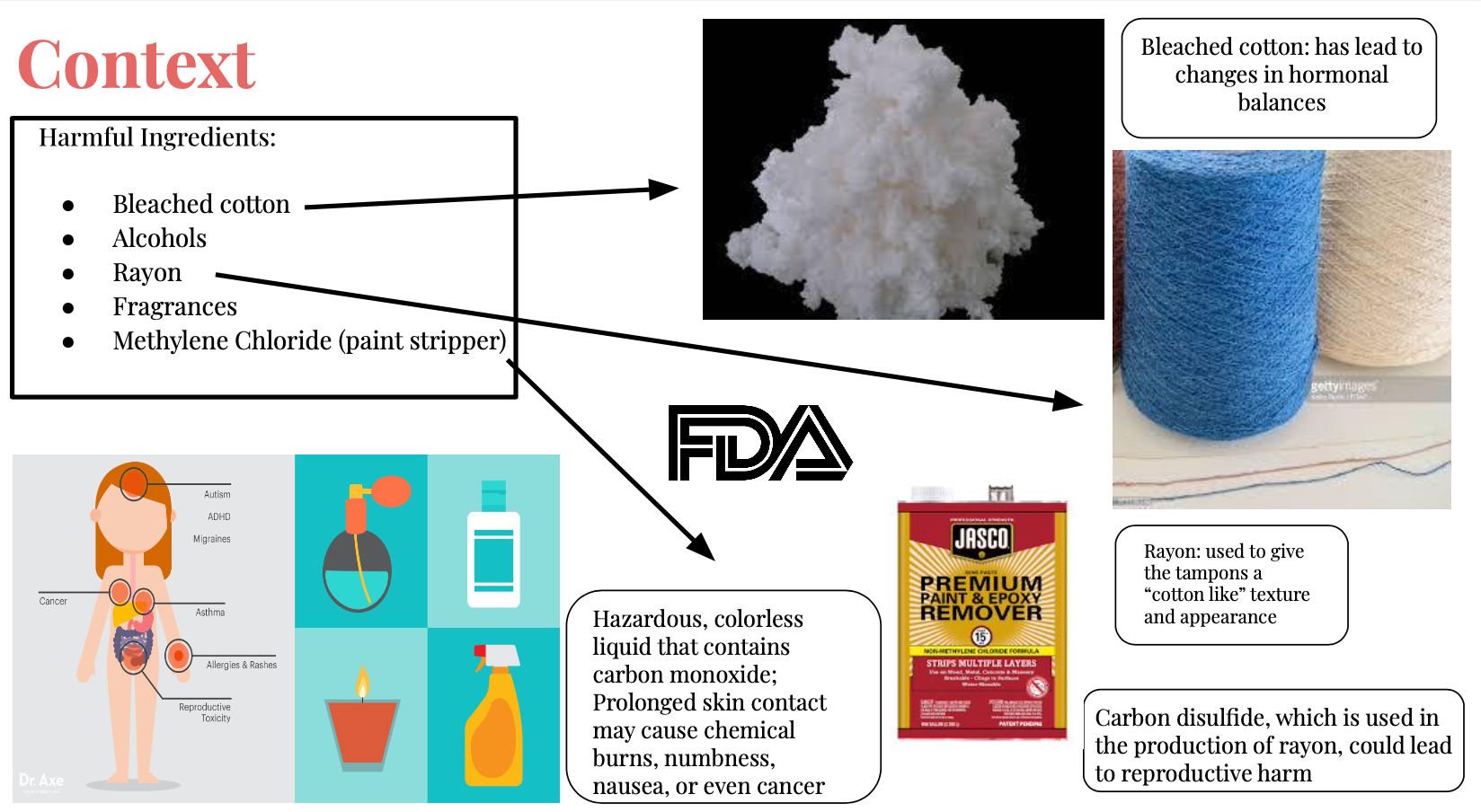
Final revision of original design question
How might we steer women in the direction of choosing safer feminine products over name-brand, and how might we educate them on making the safer decision?
Survery Results & Findings
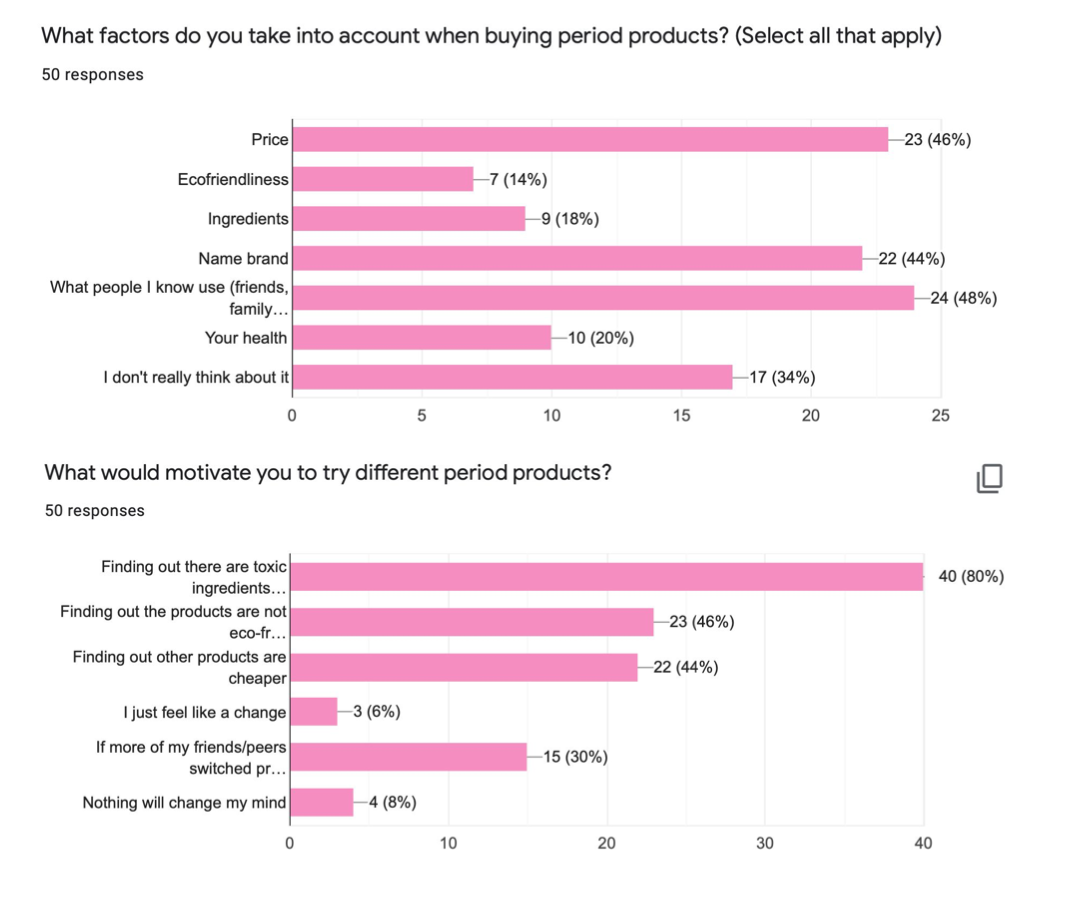
Interview Responses & Findings
Insight/ Interview Takeaway: Habits
People are unwilling to change their habits
"I am not sure if I want to compromise the reliability I get from the brands I know by testing new ones"
Insight/ Interview Takeaway: Price
People consider price over most other factors when buying period products.
"I really only think about price"
"If there's a cheaper option, I'll take It"
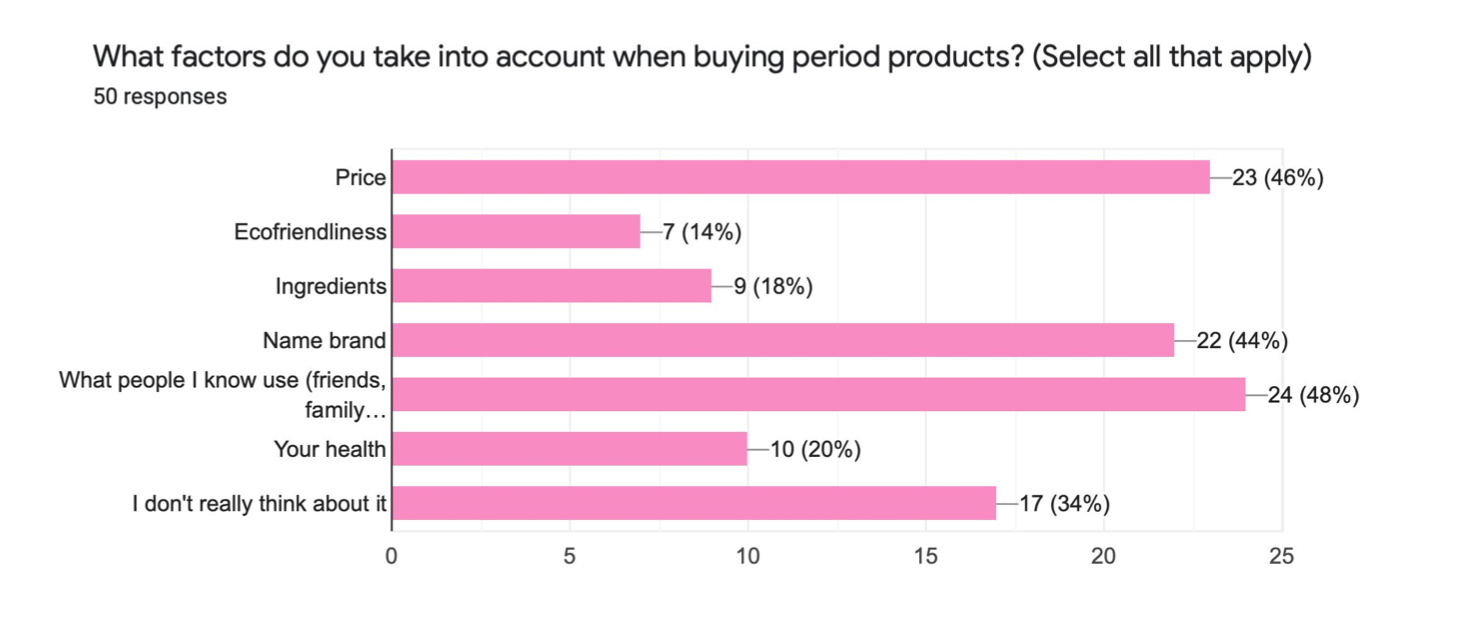
Insight/ Interview Takeaway: Familiarity
People value the popularity and across-the-board use of conventional brands
"If a lot of people aren't using It, I don't really trust It"
"I wouldn't want to be the only one using it"
Insight/ Interview Takeaway: Health
Users are unaware of what products are going into their bodies
9/10 of our interview recipients responded with cotton as the main ingredient
Ethnographies
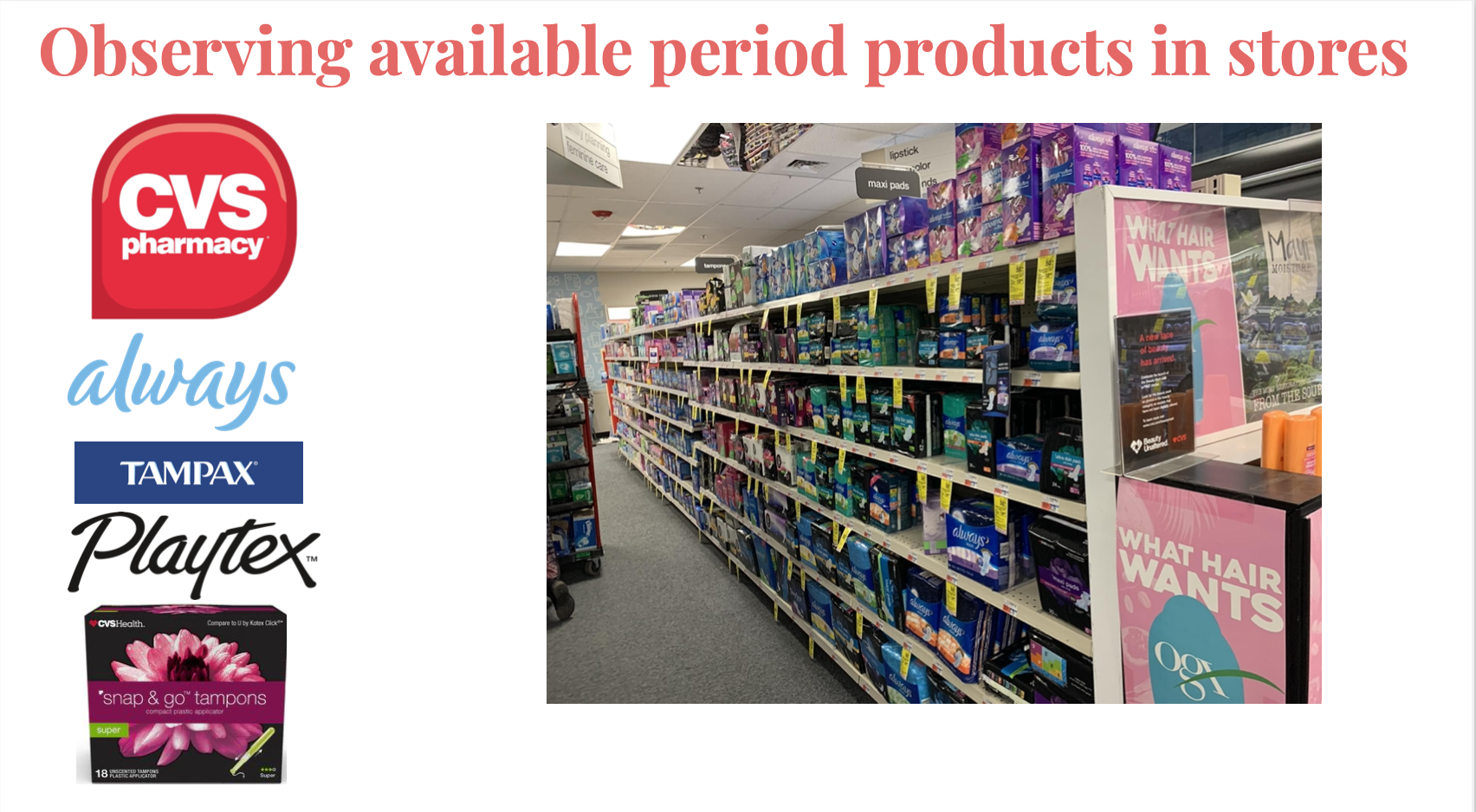
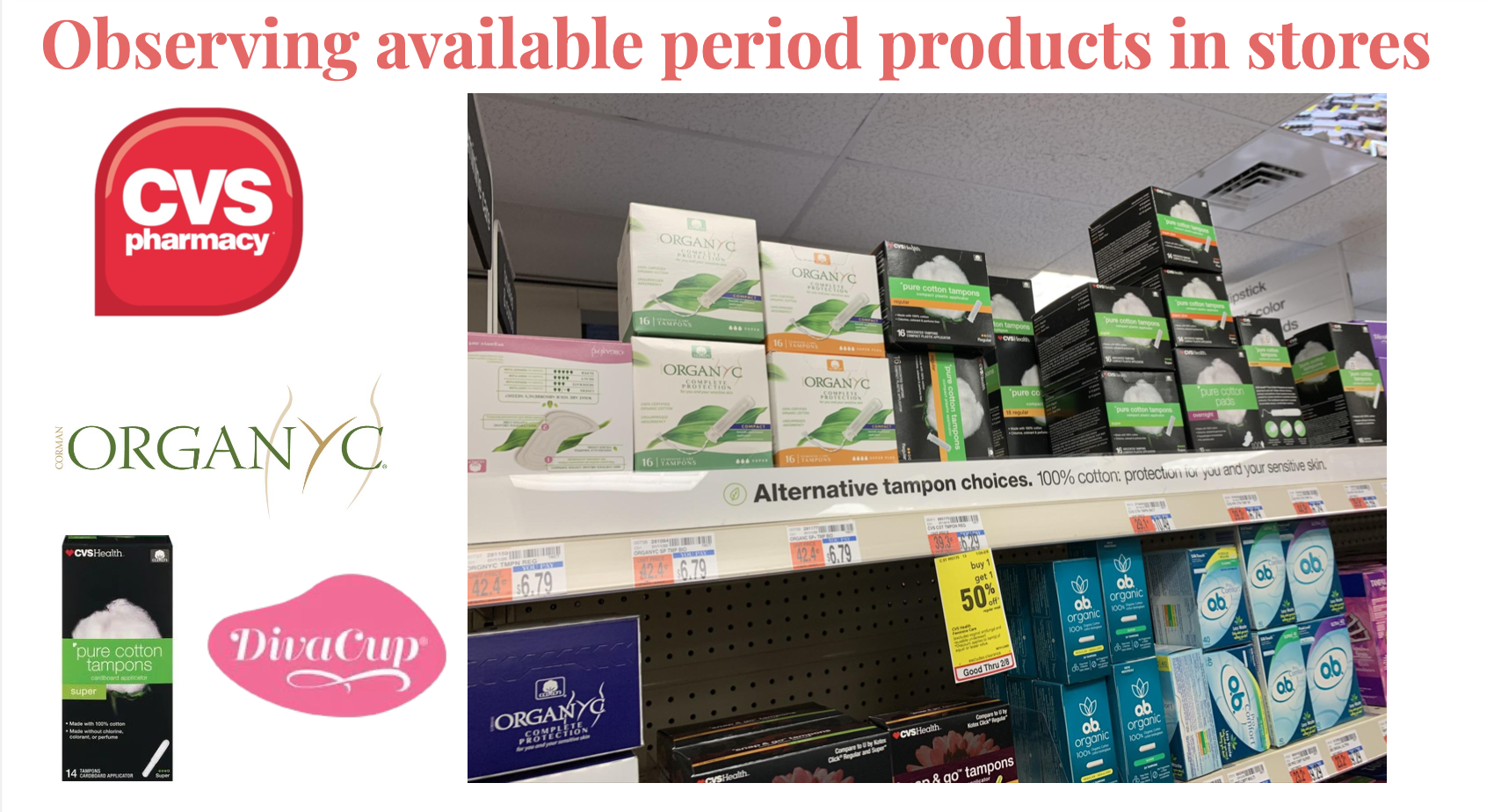
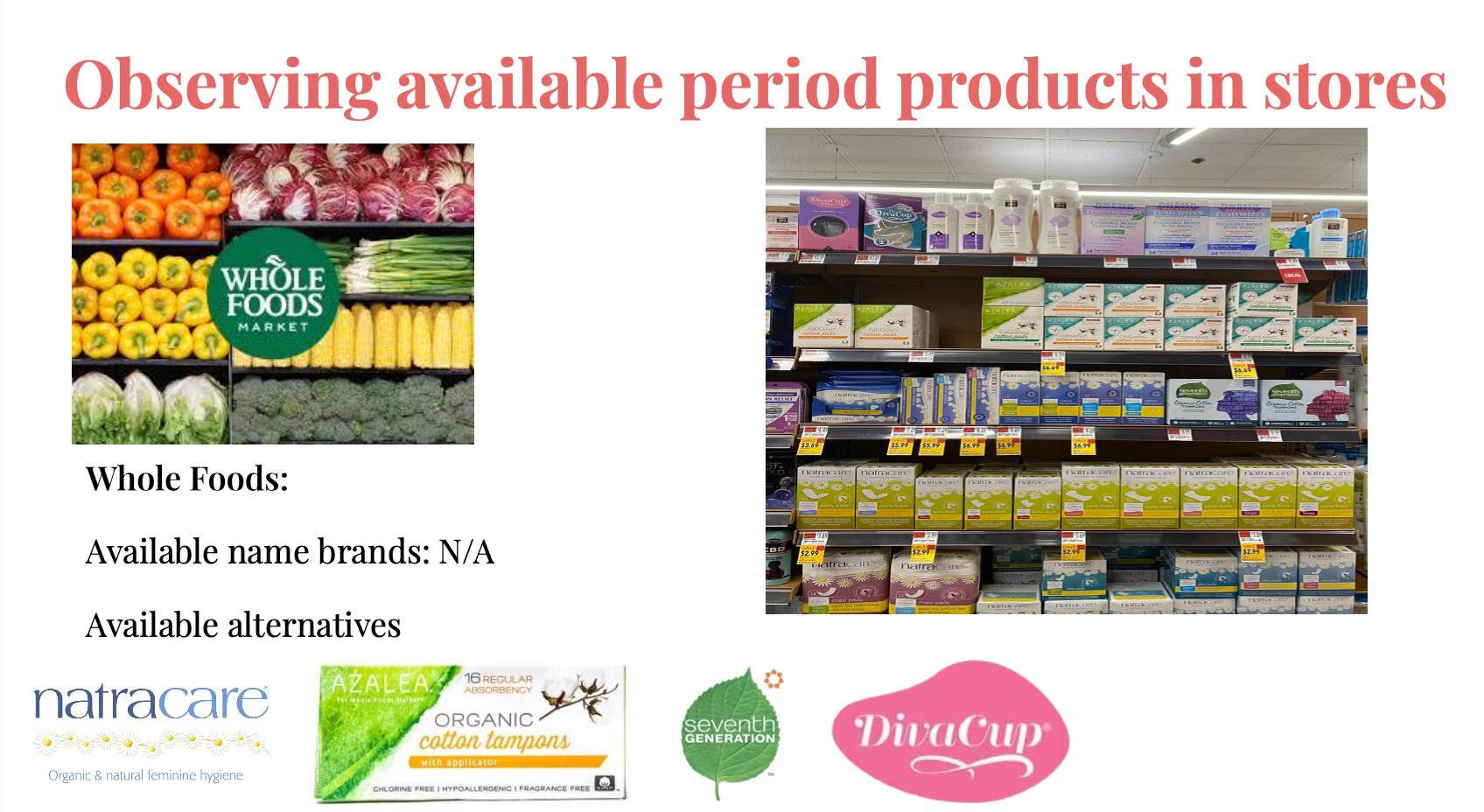
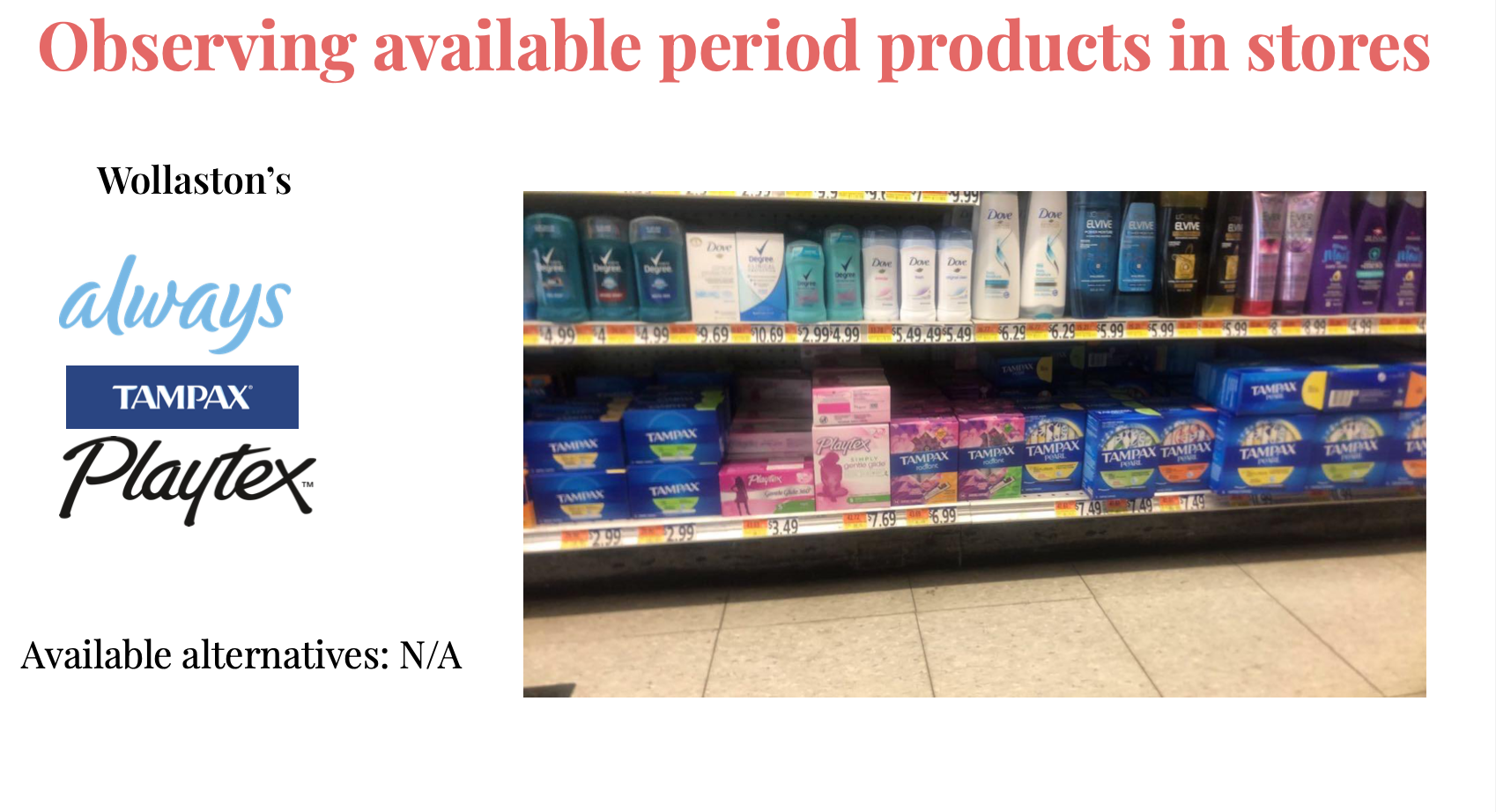
Designing our page

First, we chose a color scheme to decide the overall aesthetic we wanted for the Instagram page.
Then, we mapped out the format of our Instagram page


We designed and created a profile picture for our page
Creating our posts
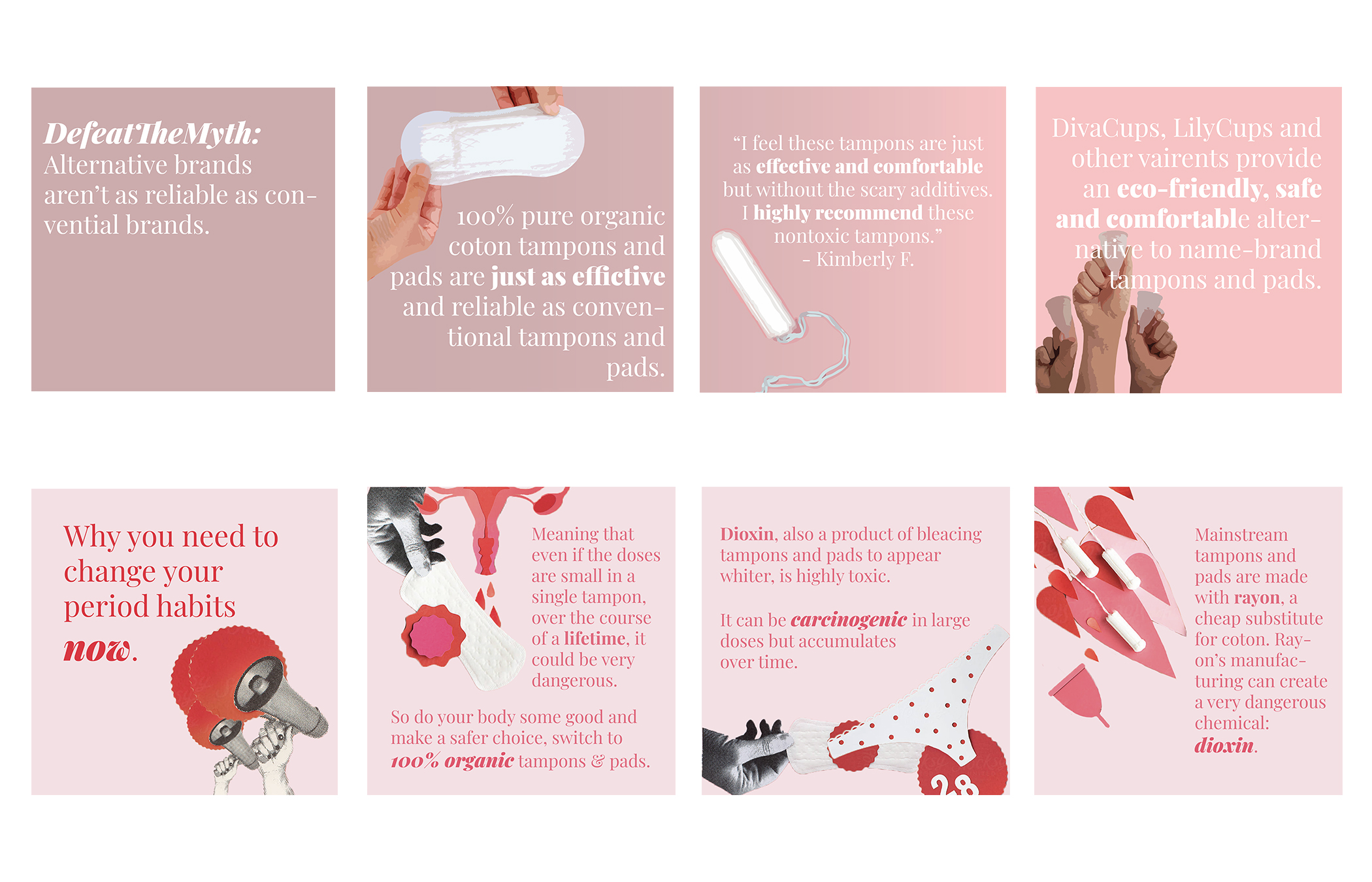
There were a few different categories of posts we created: #DefeattheMyth, facts, real stories, and stores where safe brands are sold
Here are the posts we created that show two stores where 100% natural and safe brands are sold, as well as a map of how to get there from the Northeastern campus.

Mock Posts
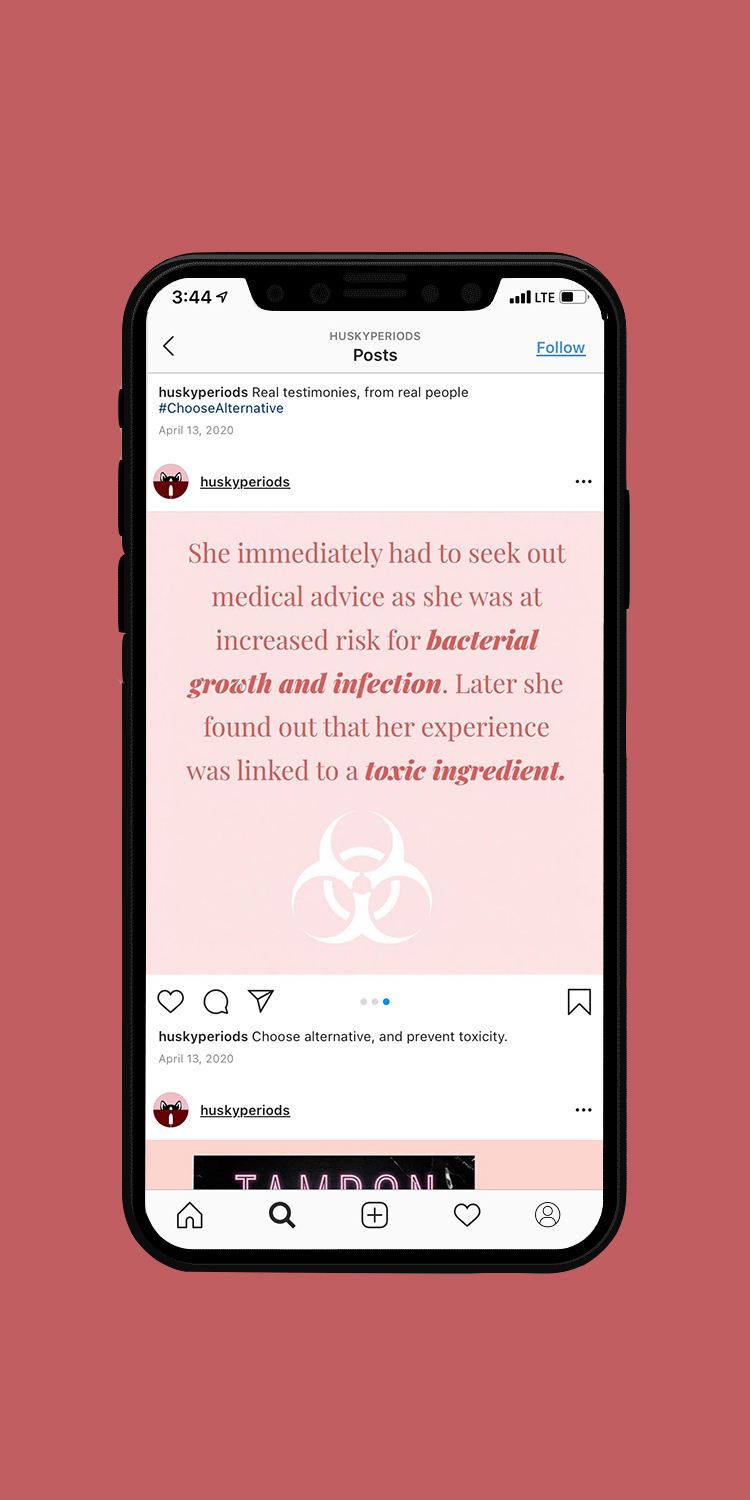

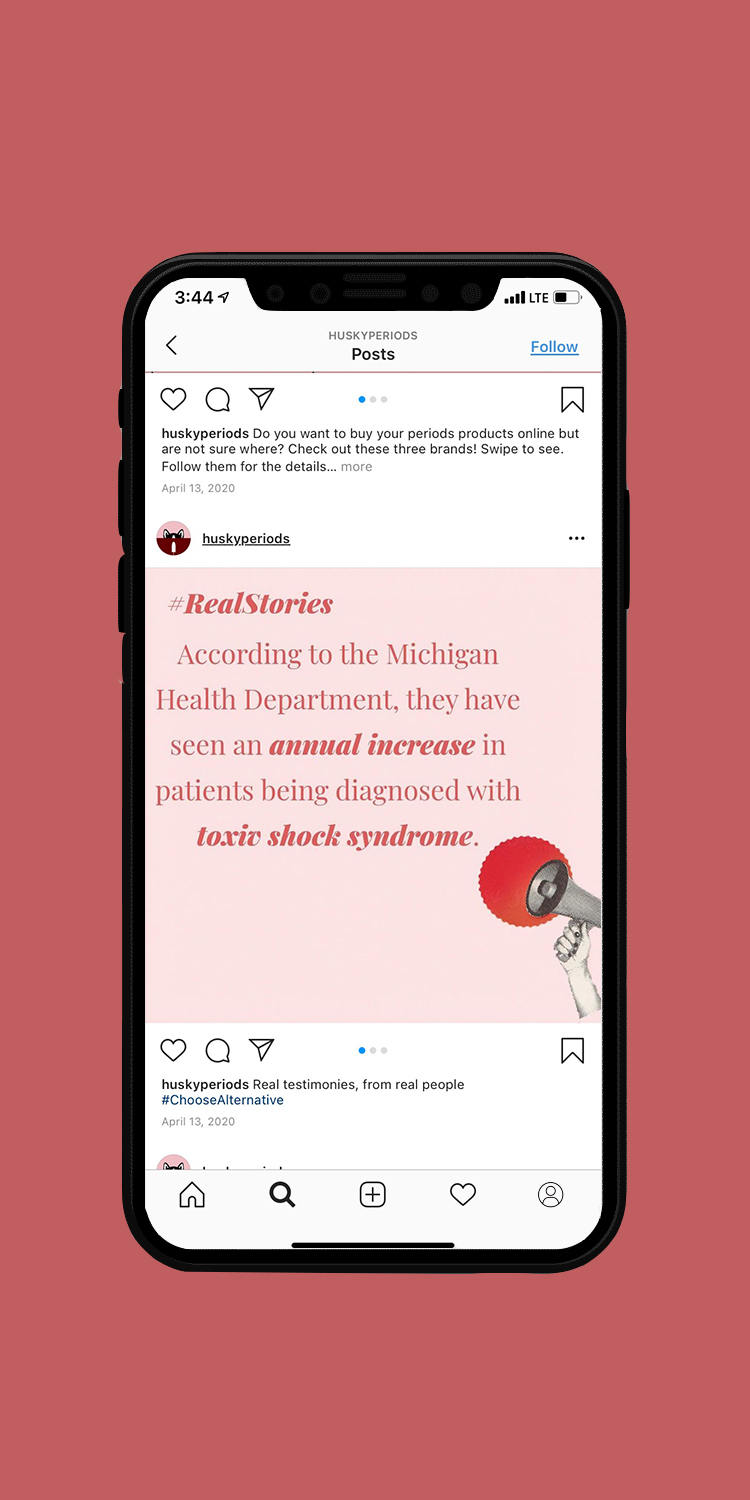

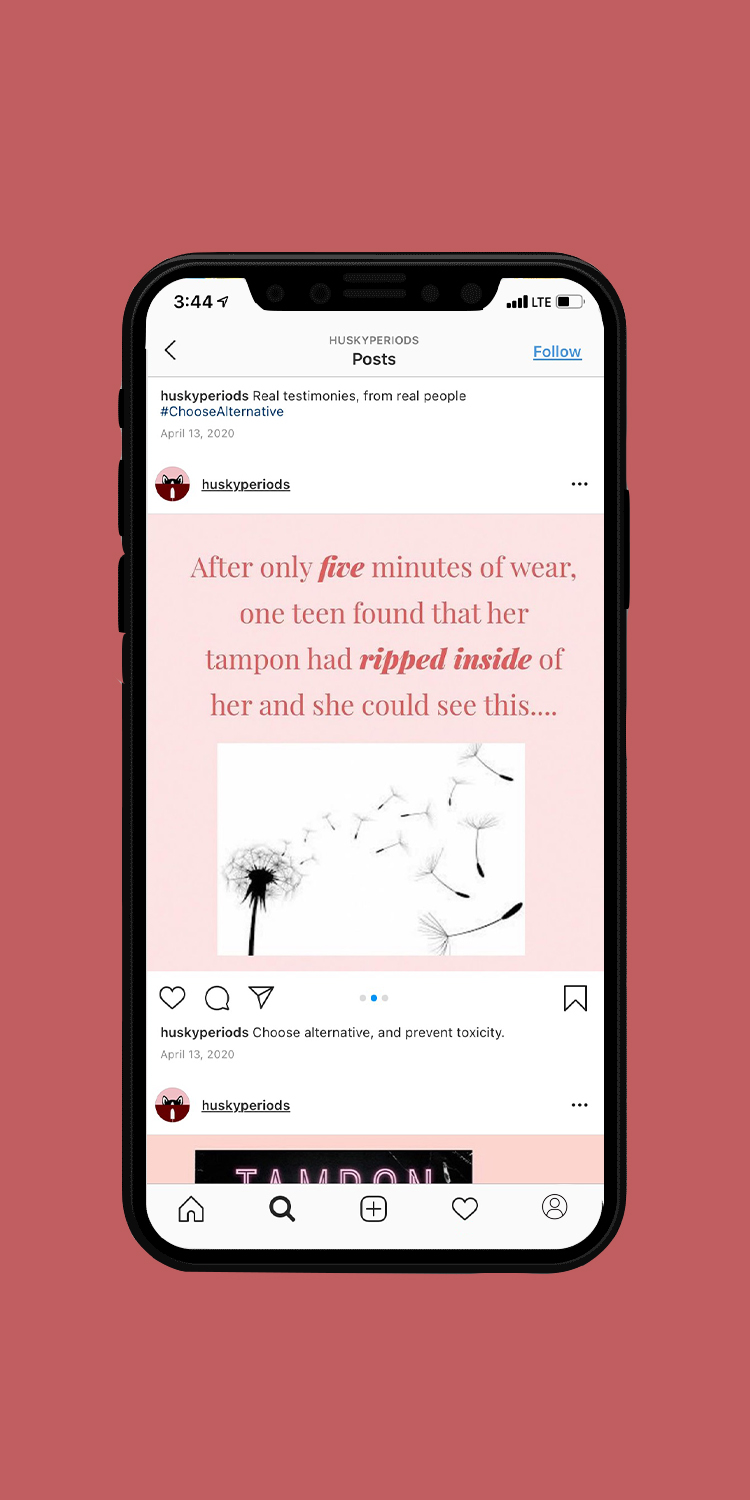
Overall, this course and project dove deep into the processes behind User Experience/User Interface Design. Throughout the duration of the project, I worked on my interview skills, strengthened my ability to work on a team and communicate properly with my team members, organization, and managing my time. I learned new skills such as experience mapping, how to conduct ethnographies, and the proper way to survey an audience to get the maximum result. The course emphasized the importance of an awareness of audience and context in creating meaningful communications and experiences. By the end, I had understood the value of systems thinking and the importance of feedback and exchange as a means for assessing the quality of design’s effectiveness in helping users achieve their goals.